Many people think of catfish as lazy bottom feeders, but that is just not the case.
In fact, catfish are a top predator and one of the most successful and widespread fish in the world. They are a lot of fun to catch, especially on live bait.
In this article, I’ll discuss using bluegill for catfish bait…and how it might just help you catch your new personal best!
This page contains affiliate links. As an Amazon Associate, I earn from qualifying purchases.
Table of Contents
Best Bait for Catching Big Catfish
If you really want to step your game up and target BIG catfish you should consider using bluegill for catfish bait. Bluegills are one of the most prolific and widespread panfish in North America and a top food source for Blue Catfish, Channel Catfish, and Flathead Catfish.
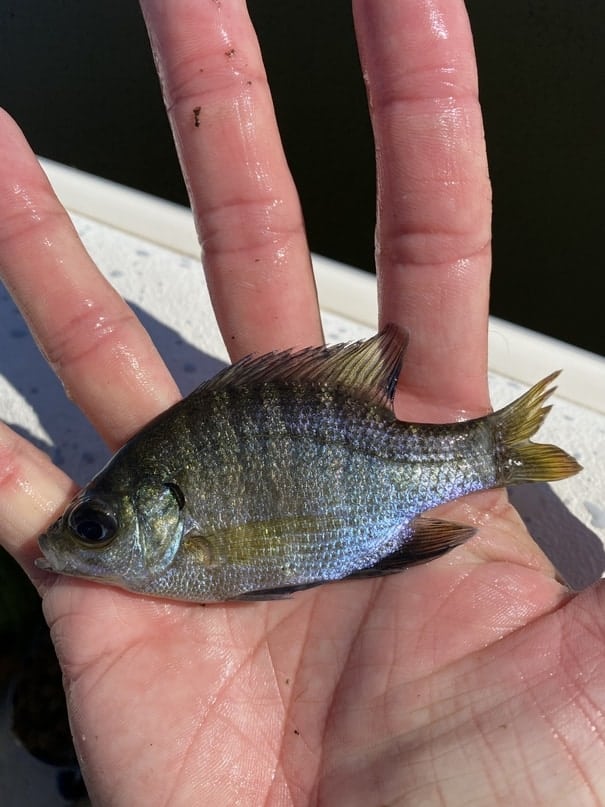

Why is Bluegill good for catfish bait?
Bluegill are one of the most widespread species of fish in the sunfish family. They can be found from Mexico to Canada and almost everywhere in between. Bluegill are also highly adaptable and can be found in everything from small ponds to large river systems and tributaries.
Catfish and bluegill often share the same habitat, and bluegill are a natural prey fish that catfish have been eating for millions of years.
In fact, in many water bodies around the world catfish are introduced to help control the bluegill population.
The size, scent and shared habitat make bluegill an excellent live bait choice for anglers pursuing catfish.
Especially BIG catfish!
How to catch live bluegill for catfish bait
NOTE- Be sure to check with your state fish and wildlife agency on the rules for using bluegill as livebait. Some states it may not be legal, and other states there may be certain rules around this. Always check your local fish and wildlife rules to be sure your in compliance.
To catch bluegill for catfish bait you’ll want to use an ultralight rod, with 4-8 lb test line and a small #6-#10 wire hook. Bluegill inhabit shallow vegetated areas or hang out near structures.
A good place to start is around docks, lily pads, cattails or submerged tree limbs.
Bluegill eat insects, so crickets, live worms, wigglers, grasshoppers, and grass shrimp are all excellent live bait choices.
They can also be caught on fish bites, bread balls, and a wide variety of artificial lures (my personal favorite is a beetle spin).
Use a small bobber and split shot positioned 10-12 inches above your hook. Cast into the small openings near the vegetation or structure and wait for a bite.
Bluegills have very small mouths, so give them a one-second count before setting the hook.
Usually, the smaller fish will bite first and near the surface, with the bigger bluegill hanging out near the bottom.
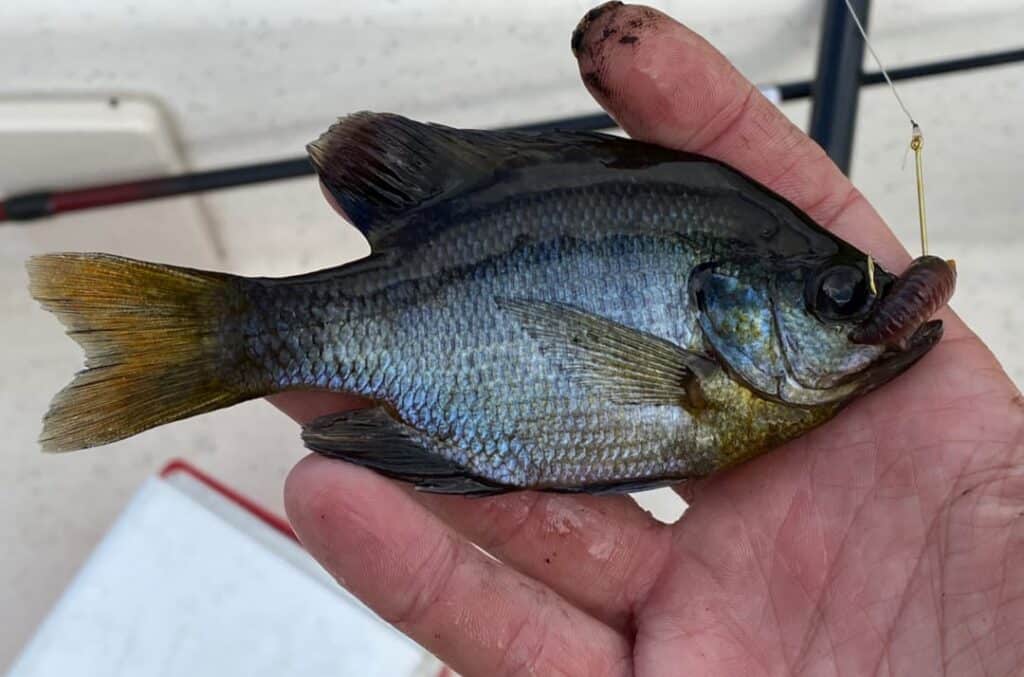
Its always best to catch bluegill in the same body of water you are fishing for catfish. This means the fish is already used to that water temperature and alkalinity.
However, you can also catch bluegill from nearby ponds, lakes, or creeks and transport them to your catfish area with a bucket and aerator.
The ideal size for bluegill as catfish bait is 3″-5″ inches. If they are too small, they will have trouble staying on the bottom or may die when you hook them.
If they are too large, you may have trouble controlling the fish near structure or in a heavy current.
Bluegill are pretty tough little panfish, and much more durable than farm-raised baitfish such as shiners or shad.
What type of catfish eat bluegill?
The short answer is, all of them! Catfish are opportunistic feeders and nearly all catfish species will eat bluegill eggs, fry, juveniles, and adults if given the chance.
However, the 3 most common bluegill predators are the Channel Catfish, Blue Catfish, and Flathead Catfish.
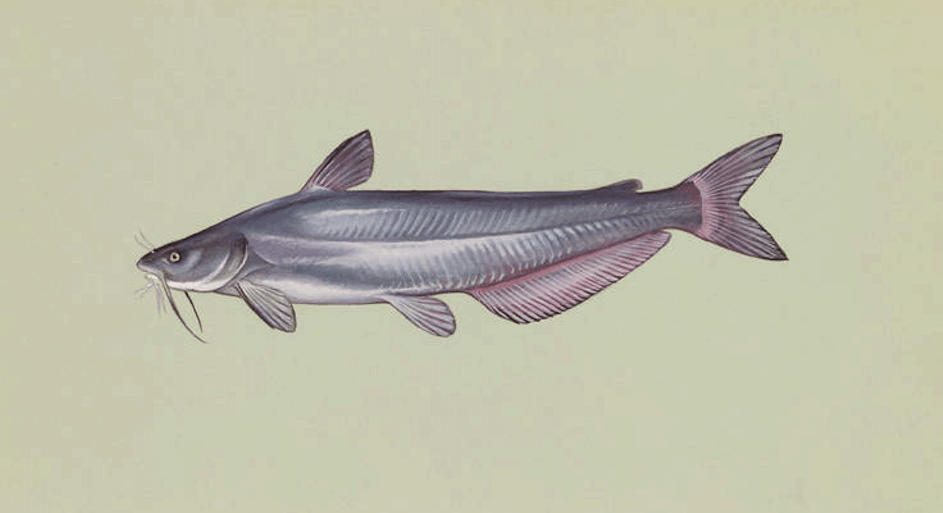
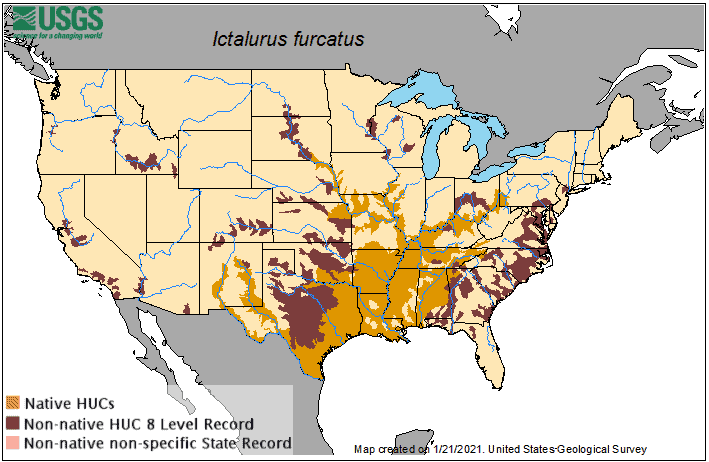
- Range- Heavy concentration in the Mississippi River Basin, its tributaries and surrounding states.
- Habitat- They prefer large flowing rivers, but can also be found in lakes, dams, and reservoirs.
- Size- The largest of all North American Catfish; common up to 60 lbs.
- World Record- 143 lb 0 oz Kerr Lake, Buggs Island, Virginia, USA 18-Jun-2011
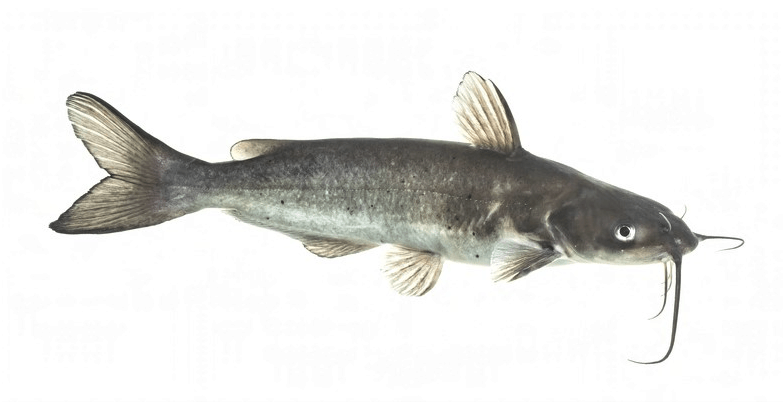
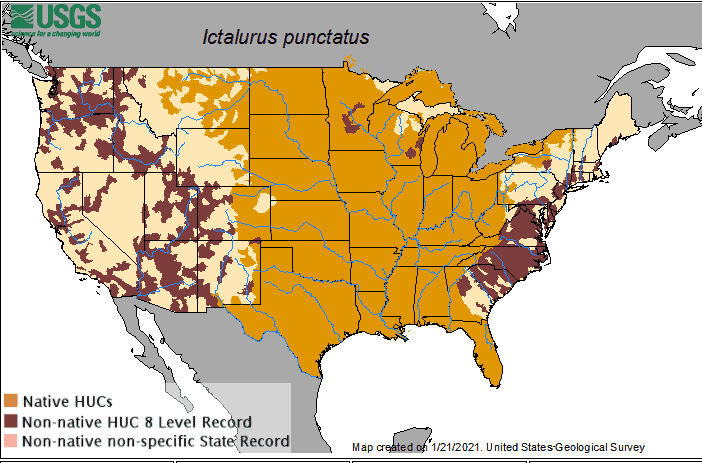
- Range- Widely distributed through the USA with a heavy concentration in the South, Midwest, and Central US.
- Habitat- They prefer sandy, gravel bottom lakes, ponds, and rivers. Heavy use in Aquaculture.
- Size- Common size range is 3-8 lbs.
- World Record- 58 lb 0 oz Santee-Cooper Reservoir, South Carolina, USA 07-Jul-1964
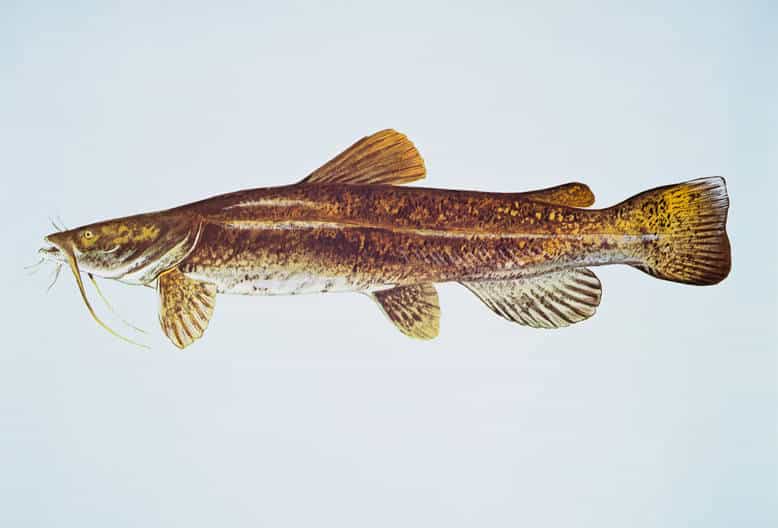
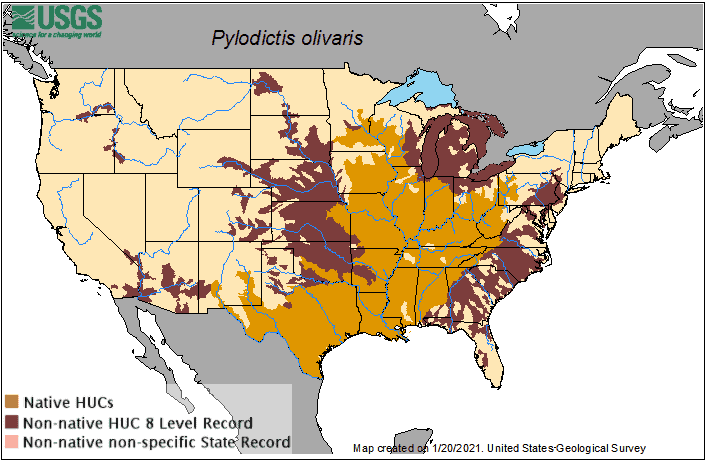
- Range- Native range is the Mississippi River basin and its tributaries. Introduced populations as far as the Dakota states and upper midwest.
- Habitat- They prefer slow-moving and moderately turbid rivers and creeks.
- Size- Second largest catfish species in the United States. Common size range up to 24 lbs.
- World Record- 123 lb 0 oz Elk City Reservoir, Independence, Kansas, USA 19-May-1998
You May Also Like: Do Catfish Bite in Cold Weather? (And How To Find Them!)
How do you use bluegill for catfish bait?
Bluegill can be fished in a variety of different ways when trying to catch big catfish. Each method has a different approach, so let’s break it down:
Live Bait
To use bluegill as live bait you’ll want to hook the fish so that it can swim as naturally as possible.
This method works best when you are in a boat, or someone on the bank to allow your bait to swim with the current or drift with the wind.
Don’t worry. we’ll go over how to hook bluegill as live bait in the next section.
Catfish are opportunistic feeders, and they also have an excellent sense of smell.
That is what those whiskers are for! When you use live bluegill as bait you are trying to trigger a predatory response from a big catfish.
Typically, above-average-sized fish are going to pursue live bait. You may get fewer bites, but when you do get a bite it’s probably a big one.
Check out this awesome video on using live bluegill to catch HUGE flathead catfish!
Dead (whole bluegill)
If you are unable to keep your bluegill or other bait alive, that is okay you can still fish with it dead. Fresh dead bait works best, meaning it has recently died and still has a fresh scent.
You don’t want your bait to be rotten, but rather you want it to still have firm flesh and a fish scent.
This method is primarily fished on the bottom. use 1/2 ounce-3 ounces of weight depending on if there is any current.
Try and place your dead bait onto small shallow areas such as sandbars where the current is in an eddy or swirling to attract big catfish.
Dead (cut bait)
Many catfish anglers prefer to use ‘cut bait’, that is bluegill that has been cut into smaller pieces.
The reason for this is that its going to release oils and scent that catfish will smell.
Cut bait is also fished primarily on the bottom with circle hooks.
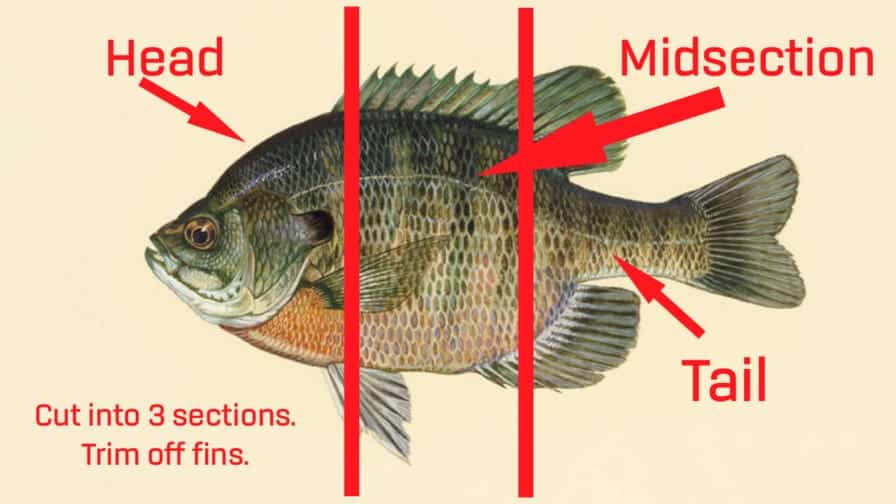
Cut your dead bluegill up into 3 sections; The heat, the midsection, and the tail. To increase your chances of successful hookups, trim the fins leaving only the meat of the fish exposed.
This will allow your bait to sit on the bottom more naturally, and it’s easier for catfish to pick up and swallow.
Frozen
Frozen bluegill can certainly work, but this is probably the least common method for using bluegill as bait.
Frozen bait does not have the ‘fresh’ scent of living or cut bait, and sometimes the meat becomes mushy and doesn’t stay on the hook as well. If you’re going to use frozen bluegill as bait, try dipping it into a catfish attractant to give it a strong scent.

How do you hook live bluegill to catfish?
There are numerous ways to hook a live bluegill for catfish bait, so lets go over a few examples:
Live bait bottom rig
This is probably the most common way to rig up and hook live bluegill as bait. All you need is a weight, swivel, leader, and hook. There are many different styles, but this rig is very effective for an all-around bottom rig.
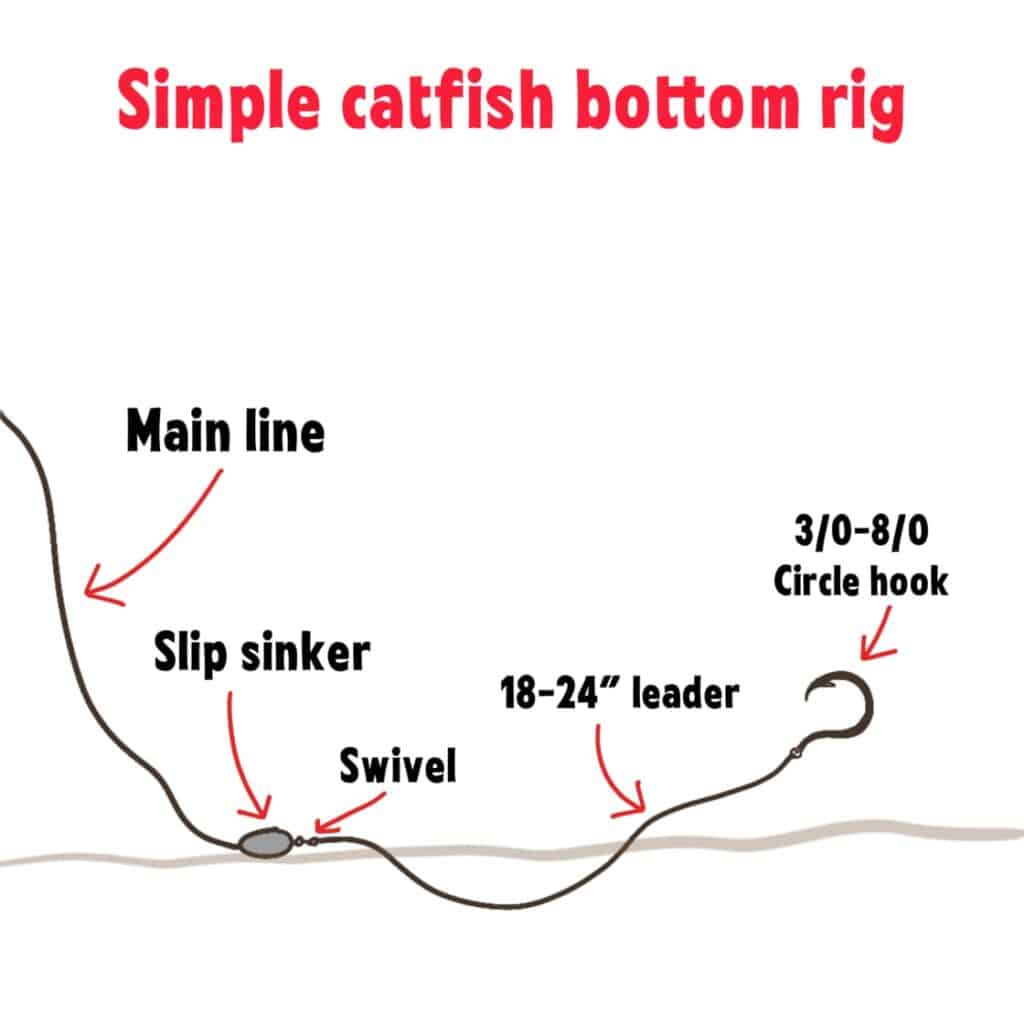
Live bait rig under a float
If you want to keep your bluegill off the bottom, and instead suspend it through the water column try rigging it under a float.
This will give you a visual indicator if you get a bite, and keep the bluegill off the bottom and cause fewer snags.

To do these you will need a weighted slip bobber. This will give you the weight needed to cast your rig out, and allow your bluegill to swim naturally below the surface.
Adjust the depth of the float to where you are fishing. Generally speaking, your bait should be about 1 foot suspended off the bottom.
A float rig works very well for drifting in a strong current, or if fishing around areas with a lot of bottom debris such as stumps.
Catfish love deep holes and drop offs- find these type of areas and you are going to find catfish.
Catfish tackle
Catfish are big, strong fish. They often are found in areas of swift current, rocks, and stumps. They have poor eyesight and are not line shy- so most anglers beef up their tackle and go heavy.
Here is an example of a catfish rod and reel to target big Catfish:
- 6-7 foot medium heavy-heavy style rod
- Large spinning reel or open bait-cast reel with 20-40 lb monofilament line.
- 40-60 lb test Fluorocarbon leader
- Large circle hook, anything from 2/0-8/0 hook depending on the size of your bait.
- 1/2 oz- 3 oz of lead weight to keep your bait on the bottom.
The Bill Dance Catfish rod and reel combo made by Quantum is a great setup that is ready to fish!

Catfish tackle does not have to be complicated!
What other baits work well for Catfish?
Ask any serious catfisherman, and they probably have a funny catfish story or a lucky bait they swear by.
Catfish are omnivores with an excellent sense of smell so they can be caught on a variety of baits both dead and alive.
Here is just a shortlist of popular catfish baits. Some of them may really surprise you!
| Wild Shiners | Tilapia |
| Shad | Small bullhead catfish |
| Other sunfish | Skipjack |
| Chicken Liver | Herring |
| Shrimp | Gizzards |
| Stinkbait | Nightcrawlers |
| Minnows | Hot Dogs |
| Soap Chunks | Small Fruit |
| Frogs | Marshmallows |
Heck, some people even catch catfish on soap and kool-aid baits!
Conclusion
Bluegill are a fantastic choice of bait for catfish. They are plentiful, catfish love them, and they are a tough and durable bait.
Catching your own bluegill as bait is half the fun! Its like pre-fishing before you start your actual fishing.
And as the saying goes, big baits catch big fish.
So if you really want to target BIG catfish then go catch some live bluegill and pitch them out to your favorite catfish area with some heavy tackle.
Thanks for reading and good luck!
Remember- Be sure to check with your state fish and wildlife agency on the rules for using bluegill as live bait. In some states it may not be legal, and other states there may be certain rules around this. Always check your local fish and wildlife rules before going fishing.
Related: Using Minnows For Catfish Bait? Don’t Miss These Tips!
If you haven’t guessed yet, I love fishing and everything about it!
To learn more about why I started Panfish Nation, visit the About page and follow along on Social Media:


Download a copy of my FREE Lure Color Selection Chart & Knot Guide!
Stay up to date with fishing reports, tackle reviews, industry news, and much more! We respect your privacy, unsubscribe at any time.
Related Posts
- Sauger vs Walleye: Learn These Differences and Catch More!

- How To Hold A Bluegill: Tips and Best Practices
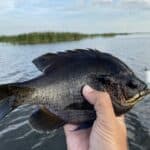
- How To Catch Wild Shiners For Bait (Step By Step W/Pics)
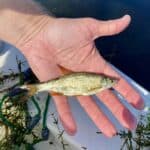
- Crazy Facts About the World Record Crappie

- What Size Hooks for Smallmouth Bass? Quick Guide

- Large and in Charge-Mouth: 10 of the Best Bass Lures of All Time (And Where to Buy Them)

